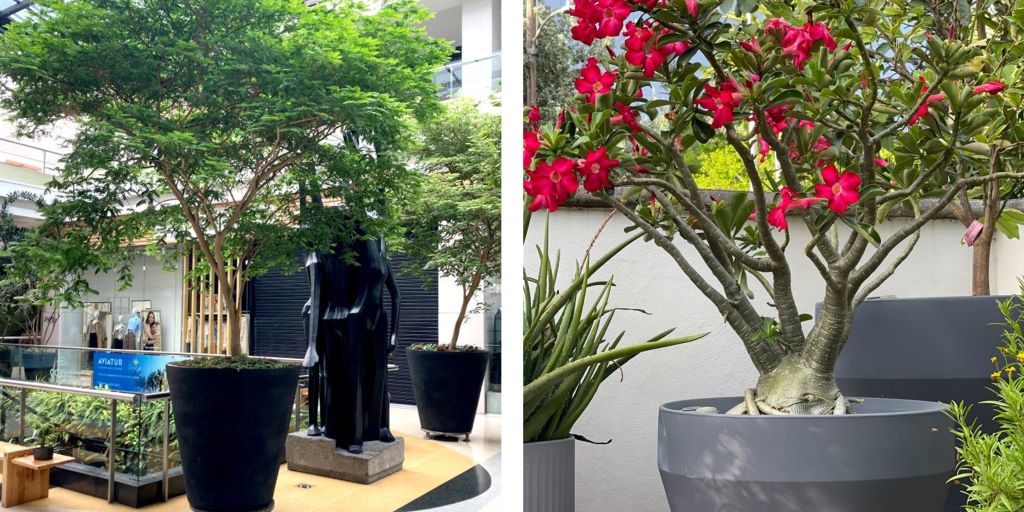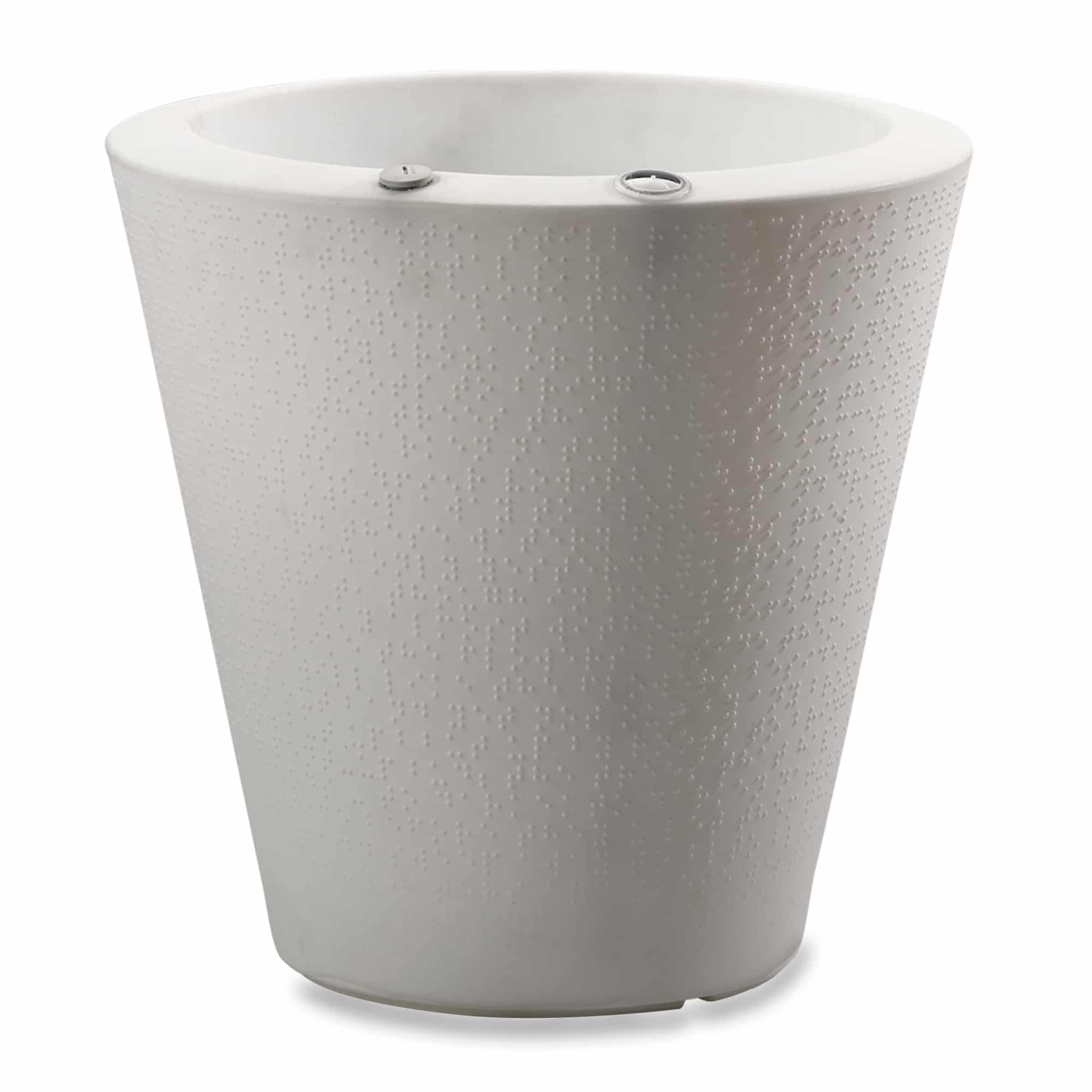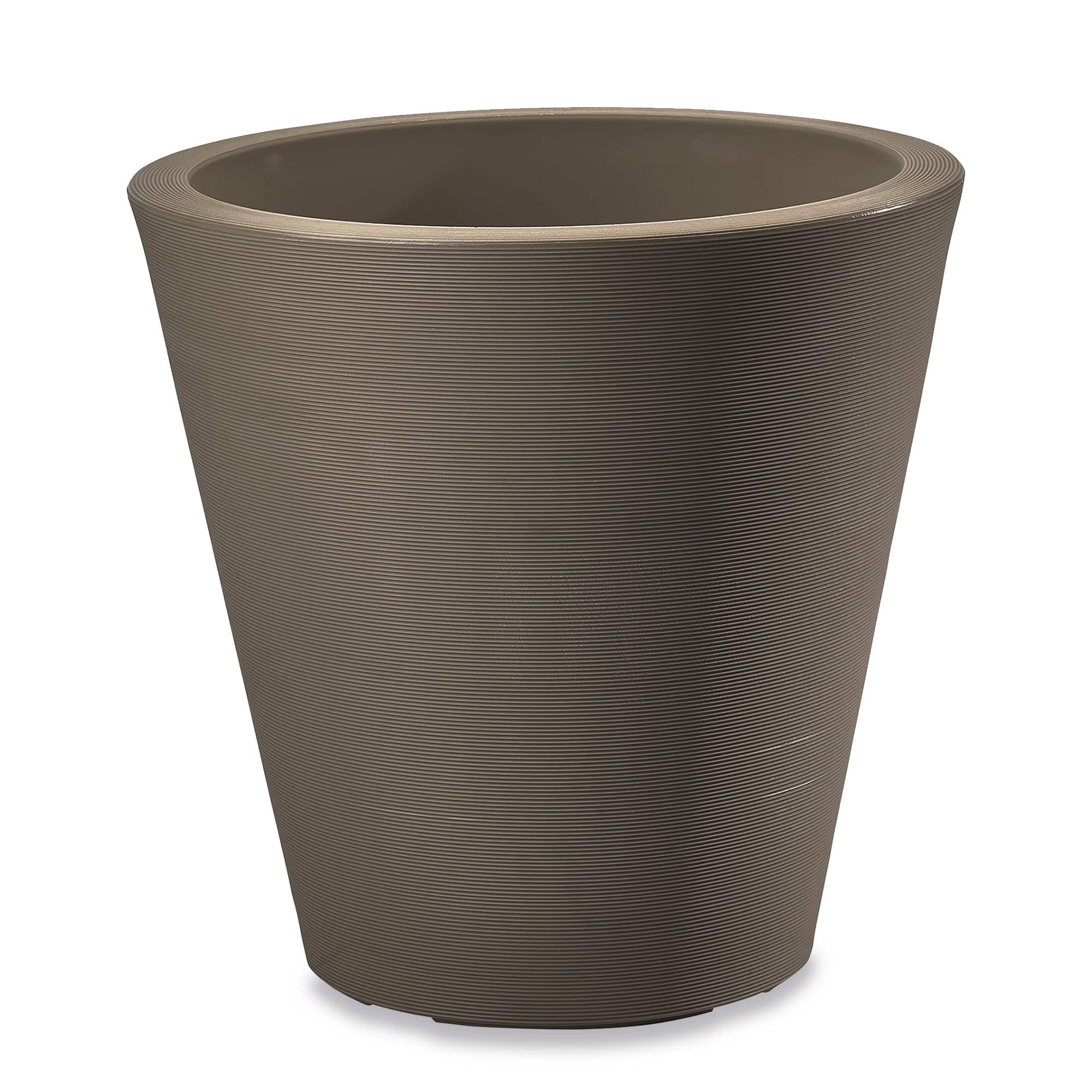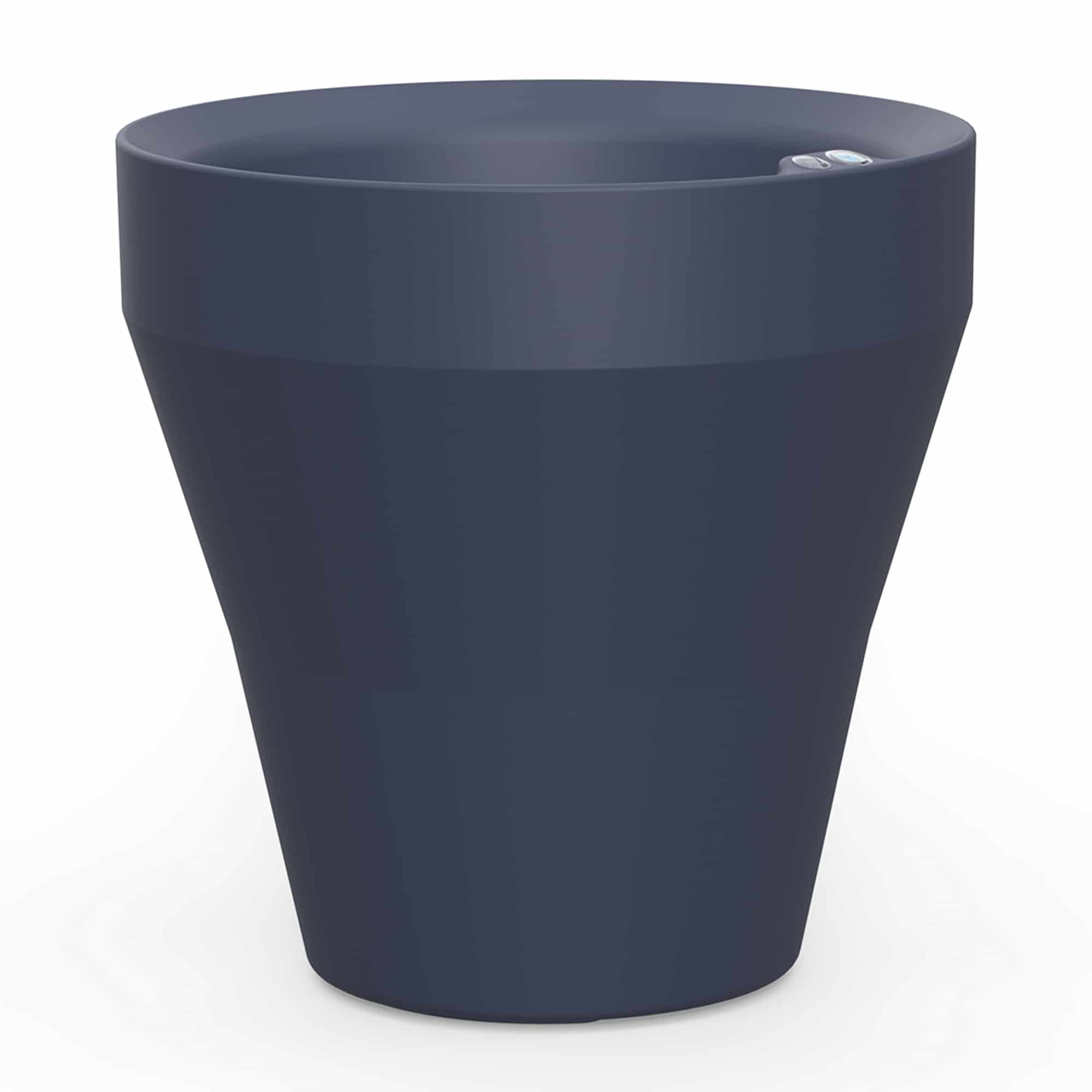Growing trees in containers is a fantastic way to enjoy greenery in small spaces or spaces without access to the soil, whether on balconies, patios, or urban environments like rooftops, sidewalks, and amusement parks. Many trees, including fruit trees in planters like apples, limes, lemons, and cherries thrive in pots if given the right care. This guide will help you select the best trees to grow in containers and provide essential tips for planting and maintenance.
Choosing Trees That Do Well in Pots
Growing Potted Fruit Trees
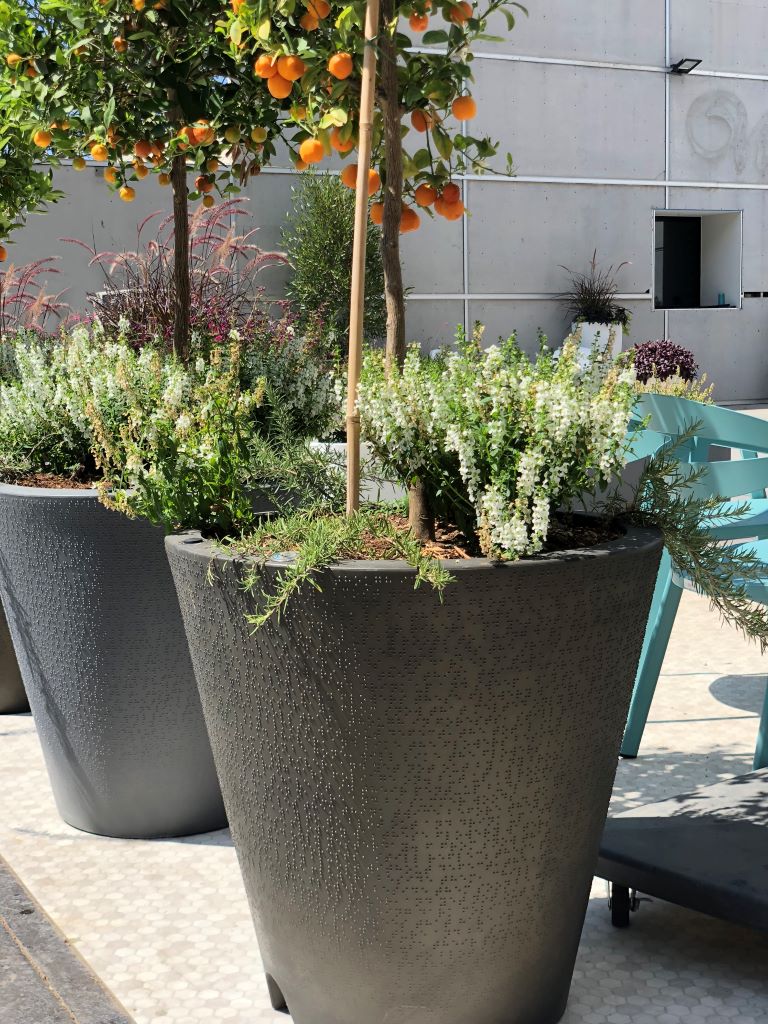
The Dot TruDrop Self-Watering planter is spacious and sturdy enough to grow fruit trees, making it a great choice for edible gardening with low-maintenance watering.
When selecting a tree for a container, opt for dwarf or slow-growing varieties. Some of the best fruit trees to grow in containers include:
- Fig Trees – Growing fig trees in containers is an excellent way to produce delicious fruit in limited space. Consider dwarf varieties such as ‘Little Miss Figgy’ or ‘Fignomenal’ for small spaces but ‘Chicago Hardy’ and ‘Brown Turkey’ grow well in large planters for trees.
- Lime or Lemon Trees – Growing citrus trees in containers allows you to enjoy fresh citrus even in cooler climates by using planters that can easily be moved indoors. Good options for growing lemon trees in containers include ‘Improved Meyer Lemon’, ‘Calamondin Orange’, and ‘Bearss Lime’.
- Apple or Pear Trees – Growing apple trees in containers works well with dwarf apple varieties like ‘Gala’, ‘Fuji’, ‘Honeycrisp’ and dwarf pear ‘Anjou’, or ‘Bartlett’.
- Cherry Trees – Growing cherry trees in containers provides ornamental beauty and fruit. Ornamental cherries like Prunus ‘The Bride’ and Prunus ‘Accolade’ are nice dwarf options
- Peach Trees – Growing peach trees in containers ensures a steady supply of juicy summer fruit. Check out dwarf options like ‘Intrepid’ and ‘Redhaven’.
When growing potted fruit trees, consider factors such as your local climate (hardiness zone), space availability, and whether the tree requires a pollination partner. A planter grown fruit tree that is not hardy in your zone can be moved indoors to a sunny location for winter. Crescent Garden’s light-weight planters, planters with caster wheels, or Pebble caddies are excellent options for easy mobility.
Other Trees That Grow in Pots Well for Urban and Commercial Spaces
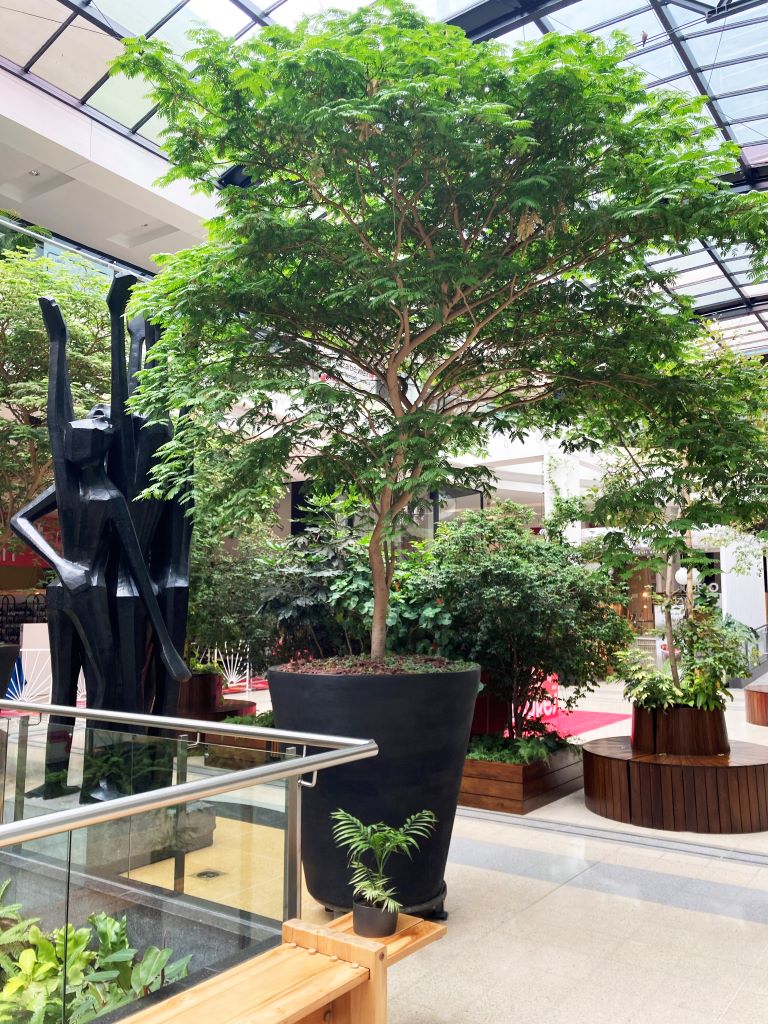
The Madison planter at Oviedo Shopping Center in Medellín, Colombia — both durable and elegant for public spaces.
Besides growing fruit trees in containers, some ornamental and shade trees that can grow in pots nicely include Japanese maple, dwarf evergreens, and olive trees.
For areas like rooftops, sidewalks, commercial spaces, and amusement parks, larger trees can be grown in oversized planters. These trees provide shade, reduce heat, and enhance the visual appeal of public spaces. Consider these options:
- Shade Trees – Large trees that grow in containers like maple, zelkova, and plane trees can be grown in containers on rooftops and sidewalks to provide shade and improve air quality.
- Ornamental Trees – Trees that can be grown in containers, such as crepe myrtle, jacaranda, and dogwood, add beauty and attract pollinators to urban areas.
- Evergreens – Grow evergreen trees in a pots and planters like pine and spruce. They are great choices for amusement parks, providing year-round greenery.
Selecting the Best Tree Growing Containers

Eye Am and Eye Ain’t planters in Miami’s Design District — where bold design meets function in landscaping.
Choosing the right container is crucial for the health of your tree. Consider the following:
- Size – Trees that can grow in containers need deep pots (at least 20-24 inches in diameter) for root development. Larger trees require even bigger planters to accommodate their root systems so allow for plant growth when choosing your planters. Square or rectangular planters and round planters with a wide base offer more stability for tall trees.
- Material – Double-walled material is best for both containers for fruit trees and for any trees’ roots in four season environments to withstand outdoor conditions. The air pocket of a double-walled planter and double-walled self-watering planter can protect the roots from roof-top heat, heat absorbed from concrete, or extreme cold.
- Drainage – Always use planters with adequate drainage holes to prevent waterlogging. Self-watering planters are also a great option as long as they have an overflow drain like the ones in our TruDrop Self-Watering line.
How to Plant Trees That Grow Well in Containers
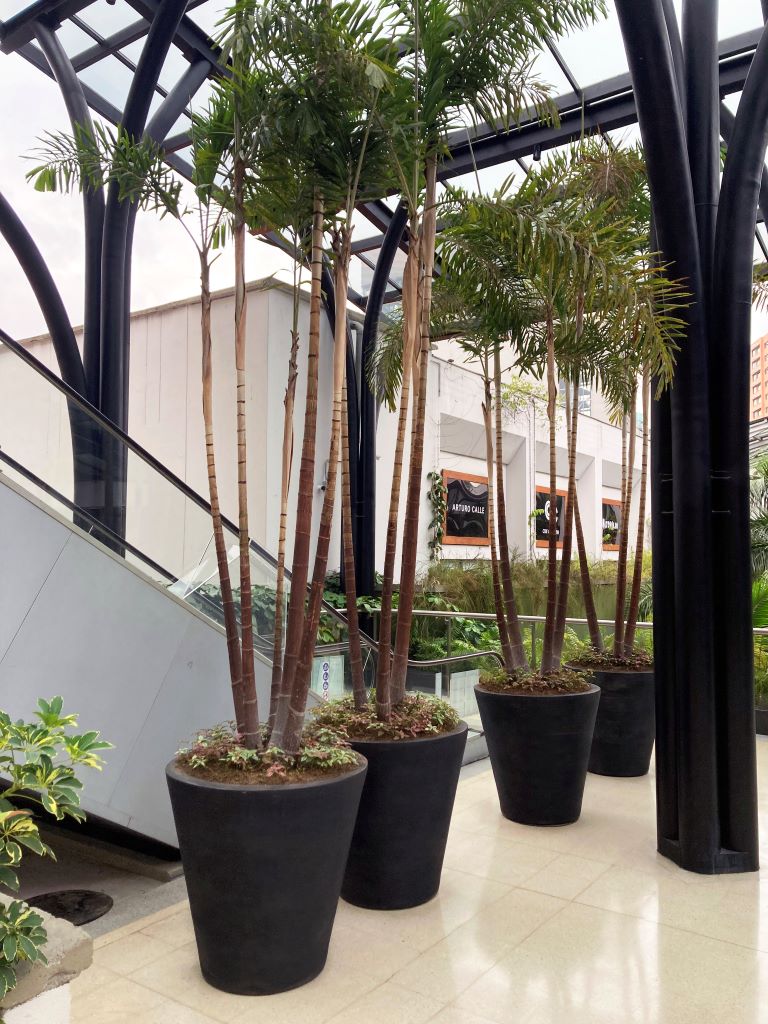
Madison planters bring height and elegance to Oviedo Shopping Center in Medellín, Colombia, with tall palms, a perfect match for modern spaces.
1. Planting Your Tree
- Choose a pot with drainage holes and fill it with a well-draining potting mix.
- Remove the tree from its nursery container and gently loosen the roots.
- Place the tree in the new container, ensuring it’s planted at the same depth as before.
- Fill around the roots with soil and press down lightly.
2. Watering and Fertilizing Trees That Will Grow in Containers
- Water regularly, as trees that will grow in containers dry out faster than those in the ground. TruDrop self-watering planters make it easy to keep your trees regularly watered!
- Apply a balanced fertilizer every month to support growth during the growing season.
3. Pruning and Maintenance for Your Tree Growing Containers
- Trim back dead or excessive growth to keep trees that can be grown in containers at a manageable size.
- If the tree becomes root-bound, repot it into larger tree growing containers.

The Dot TruDrop Self-Watering planter is perfect for tree planting with style and flexibility.
4. A Few Other Considerations:
- Recognizing the signs of a root-bound tree is crucial for maintaining its health and ensuring proper growth. A tree becomes root-bound when its roots outgrow the container or planting space, leading to several noticeable symptoms such as roots emerging from drainage holes. Roots protruding from the pot’s drainage holes indicate that the tree’s roots have filled the container and are seeking additional space. Also look for roots appearing above the soil surface that suggest that they have no more room to grow downward or outward.
- When selecting trees that can be planted in pots for your landscape design, consider factors such as climate suitability, sunlight needed for the tree or trees selected, watering ease and access, and the tree’s mature size to ensure it fits well within your desired area.
What Are the Benefits of Trees That Can Be Grown in Containers in Public Spaces?
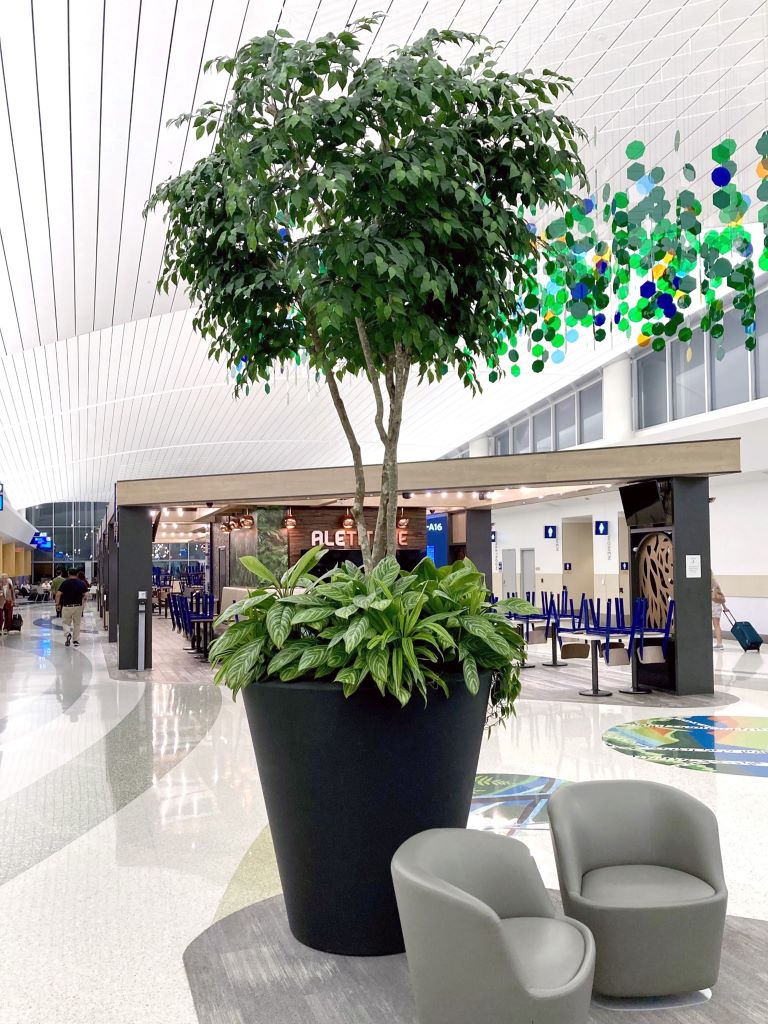
With just one large Madison planter, Grand Rapids Airport transports visitors to a tranquil garden oasis inside the terminal.
- Rooftops – Reduce heat and improve air quality.
- Sidewalks – Provide shade and enhance aesthetics.
- Commercial Spaces – Create natural beauty and comfortable resting areas.
Final Thoughts
Growing a tree in a container is a rewarding way to cultivate greenery in small and urban spaces. Whether you’re growing potted trees, fruit trees in planters, or large trees in containers for public spaces, proper care ensures healthy growth and abundant harvests. Choose the right tree, container, and care routine, and you’ll enjoy seeing how trees that can be planted in pots enhance wherever you live, work, and play.
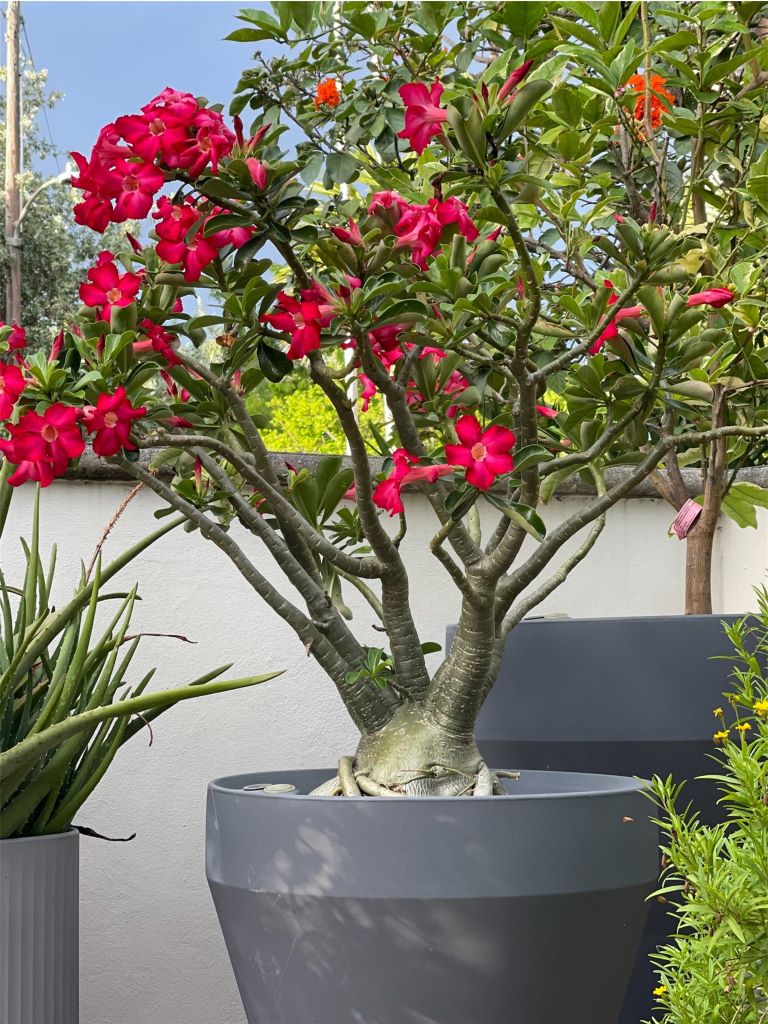
The Rim TruDrop Self-Watering planters, sturdy and stylish — shown here supporting a thriving tree with bold, vibrant blooms.
